Rural Students Deserve Opportunities in Addition to Agriculture
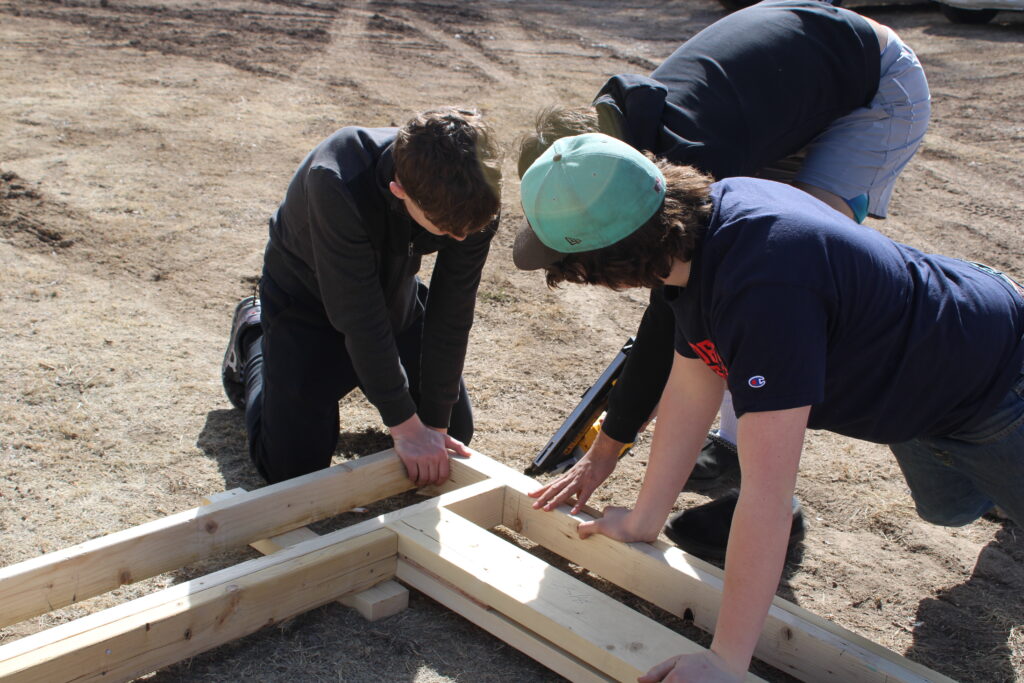
Students working together to build a tiny house in Des Moines, New Mexico.
HIGHLIGHTING RURAL NEW MEXICO
If you've read our coverage of Santa Rosa or Lake Arthur, you'll recognize some of the ingenuity that's happening in Des Moines. Being a small district has its advantages: highly personalized attention and lots of close relationships to make you known by adults and peers. Unfortunately, it also comes with a unique set of challenges, especially for the more rural and remote parts of the state, where things like internships have usually been much harder to come by. We're highlighting these small towns and rural districts in New Mexico because we're so impressed with how they've been able to create new opportunities for growth for their students.
STUDENTS AS PROBLEM SOLVERS
In the remote ranching community of Des Moines, New Mexico, students are learning how to use architecture software to design and build a tiny house. It’s part of a new X3 internship program. In addition to their individual placements in the surrounding area, the students come together as a group to learn from professional architects and contractors.
They are not only learning about these fields, but also gaining business literacy and decision-making skills because they are in charge – what they do with the finished house is up to them.
“They have to decide what they're going to do with it–whether they're going to do an Airbnb type situation where they have to market it and rent it–or if they want to sell it for use within the community, possibly for teacher housing,” says Krissy Long, the district’s internship coordinator.
Des Moines chose the tiny house project for their internship because they were already in the process of doing a complete school rebuild and wanted to capitalize on the opportunity of to work with all the different contractors at the school.
“The idea is that as the drywallers or the framers are here helping with the school, they're also going to come over and do a mini lesson with our kids on the framing of the tiny house,” explains Long. Hopefully the same goes for plumbers and electricians. Much like other rural districts we’ve featured, Des Moines is getting creative to make the most out of their time and resources.
Another goal is that the project pays for itself: this house could make money for future students to make more tiny houses. The students deciding for themselves is an important part of the process as there are pros and cons to each option that they must learn about and weigh carefully. This is not just part of their internship, but also Des Moines’ version of a capstone project.
Despite its small size, the house could offer a solution to the current lack of housing available in Des Moines.
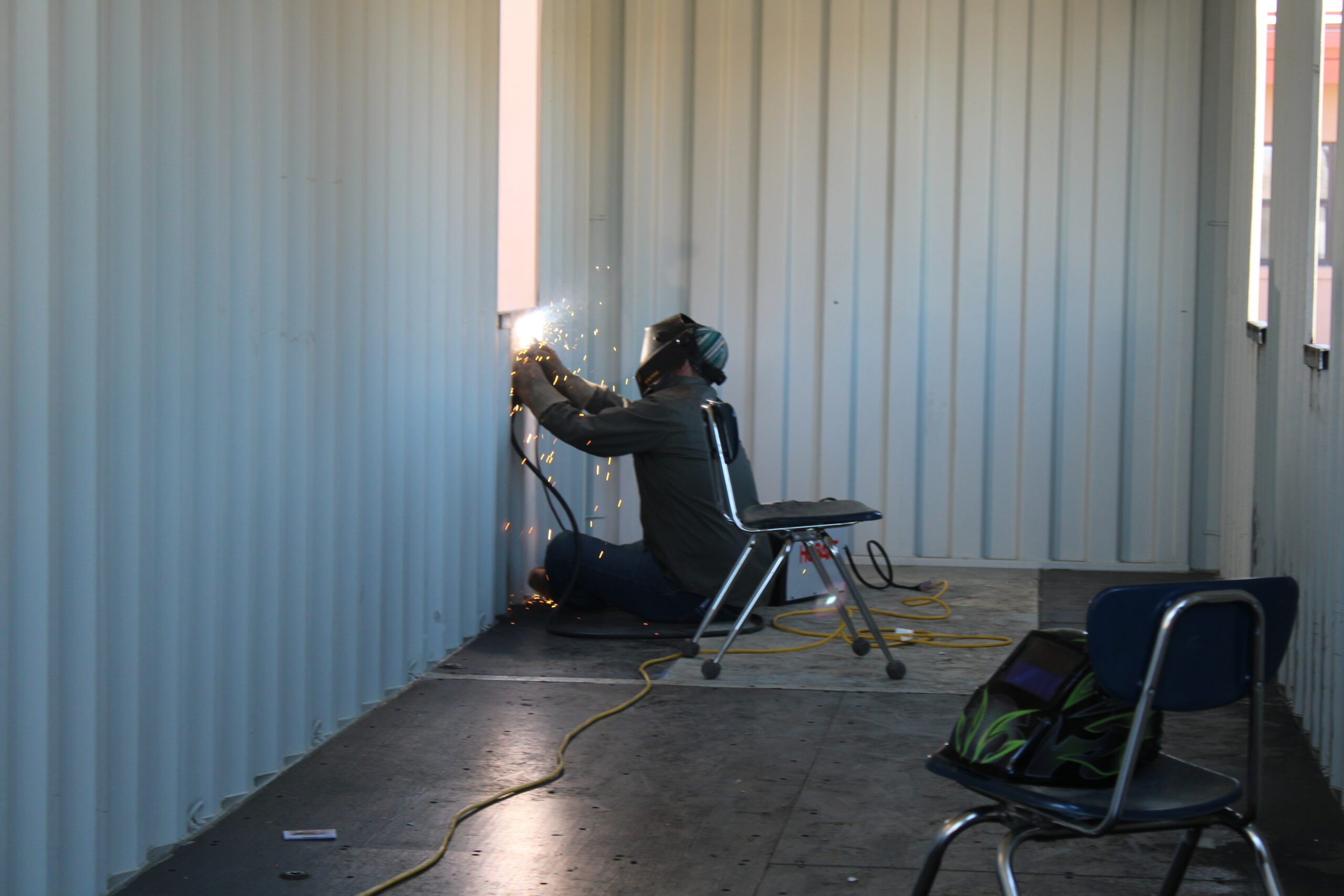
Student Kristian Fernandez welding inside the tiny house.
A SMALL TOWN WITH EXCEPTIONAL STUDENTS
Des Moines is an extremely remote town in the northeast corner of New Mexico. It’s 45 miles from Clayton and 37 from Raton – two towns that are already small. But Des Moines is even smaller. The town of 200 people has just a few businesses: a gas station, a restaurant, and a telephone company. The school itself is the town’s largest employer, though they have just 135 students from pre-kindergarten to twelfth grade.
“When I look for teachers, there are no places for them to buy or rent,” says Superintendent Kodi Sumpter. “I get contacted every month for families that want to move to our community because of our school system and there’s just nothing.”
Superintendent Sumpter grew up in Des Moines and attended the same school she now runs.
“I started here in second grade and graduated from here and then came back and taught for about 15 years before I became an administrator,” says Sumpter, who has served as superintendent for the last seven years.
Her own children are students at the school and her oldest son is even participating in the new internship program. She praises the small, close knit community, for being so committed to each other and to their youth’s education. Des Moines students regularly get some of the highest test scores in the state and the school has a 100% graduation rate. But Sumpter also acknowledges that as such a rural community, students face unique challenges that she hopes this program and others like it can address. The biggest thing for Sumpter is that she wants Des Moines students to get exposure to careers that they typically aren’t exposed to.
“One of the difficulties for kids from this part of the world is they're just not exposed to a variety of careers,” says Sumpter.
“One hundred percent of students typically go on to either college or some type of trade school or career, but a really high percentage of them major in some type of agricultural based career, basically, because that's our only CTE program.”

Students posing while framing the walls of their tiny house.
EXPOSURE AND VARIETY
In a town with just three businesses in such a remote area, the school district has had to be especially inventive to find more opportunities for their students, which is how the tiny house idea started. They wanted something that they could work on with the students without having to travel far.
“It's a 45-minute drive to get back to Raton to log in for an internship. So we felt like we needed to have something on campus as well as out in the community,” says internship coordinator Long, who used to homeschool her kids but liked the school district so much that she decided to enroll them.
“I saw the really good things that the school is doing for the community at large and the atmosphere that is such a welcoming family atmosphere,” adds Long. “It drew me to the school.”
Long was recently hired by the district to coordinate the internship program. Part of her job has been to interview the students about their interests and find places for them to intern. She and Superintendent Sumpter have worked hard to connect their students to internships with mentors from a broad range of careers. Some are in agriculture, but there are also students working with a physical therapist, a financial advisor, an engineer, a real estate agent. One student is working at an art gallery and working on a production at the historic Shuler theater, both in downtown Raton.
"This internship connects me to my future career as a physical therapist. I see that I truly do want to become a physical therapist and will have fun working at this job,” says Nash Trujillo, a senior at Des Moines Public Schools. “I get the opportunity to better myself and learn new skills. The most important lesson I learned was that it is ok to not know the answers and it's okay to seek help for answers."
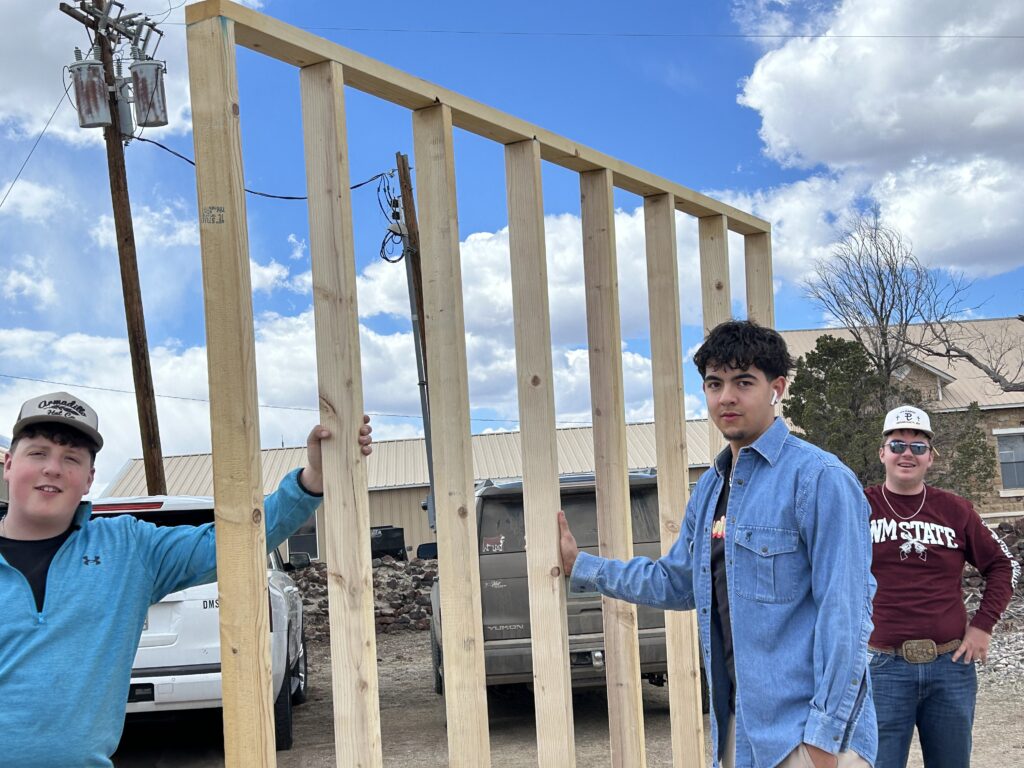
Students pose with a wall they are about to install in the tiny house.
The internship program also includes help with things like filling out tax forms and financial planning. In such a rural area, most students haven’t had the opportunity to be formally employed and so getting their first job after high school can be daunting.
“A lot of our kids work for family members,” explains Sumpter. “They haven't had the opportunity to work for people outside the family and there are just different expectations.”
Students are learning how to be professional, how to communicate, all kinds of important life skills that go beyond mere exposure to different careers. They are also being paid for their time – another key component of the program. These opportunities are rare for rural areas, but necessary so that all New Mexican students have access to educational and career success, not just the students living in urban areas.
“I'm so thankful that Future Focused is looking at these little bitty rural areas,” says Sumpter. “Our kids deserve that. Rural New Mexico deserves that, too. I mean, we're not any less important than a kid in downtown Albuquerque or in Hobbs or wherever.”
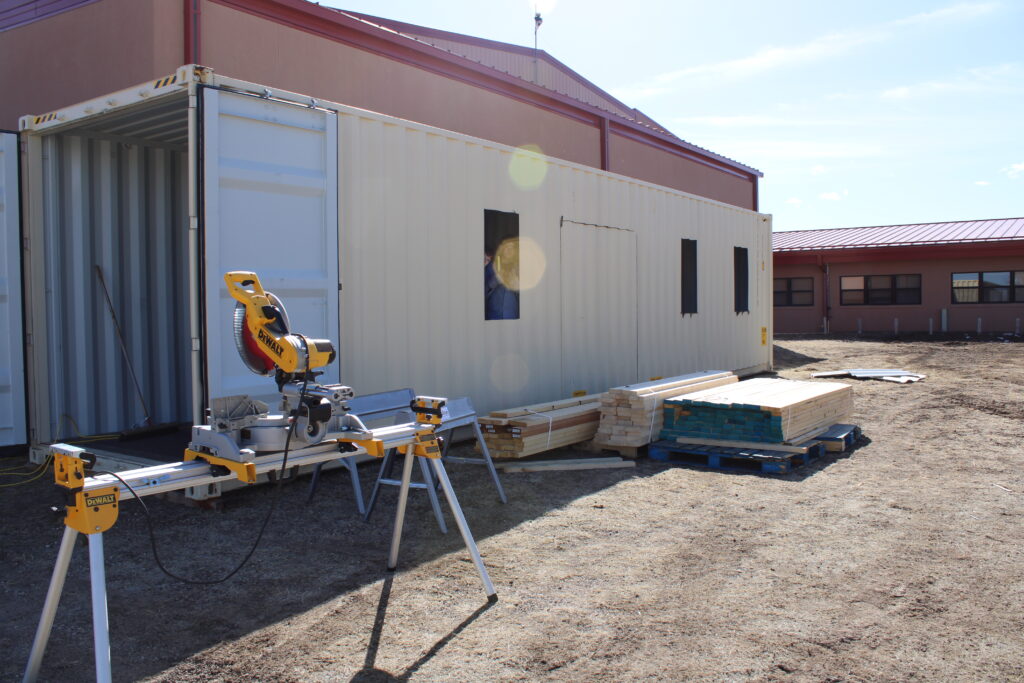


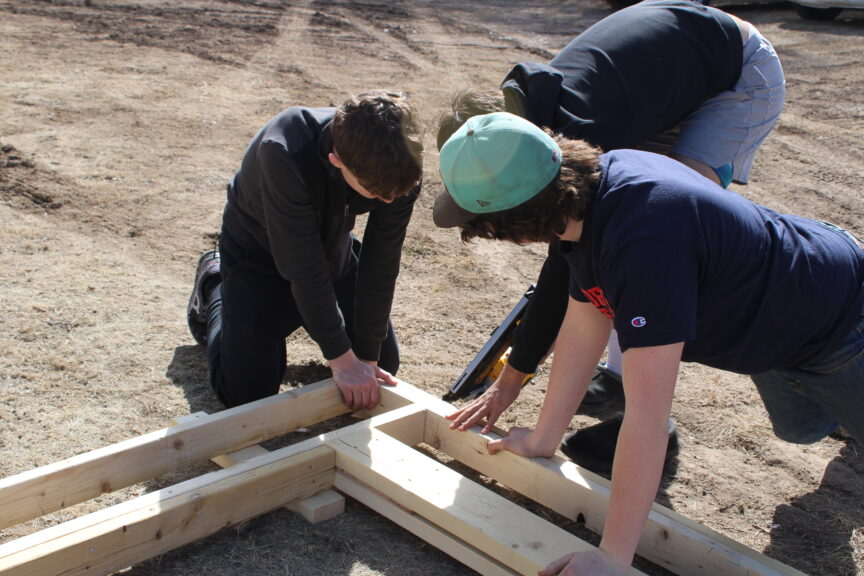
Comments
Tony: Great work on the part of FFE in supporting small districts to develop innovative approaches to the educational needs of students! Hays off again to you and your team! Jim